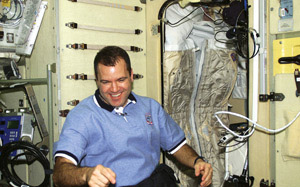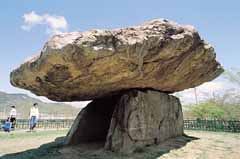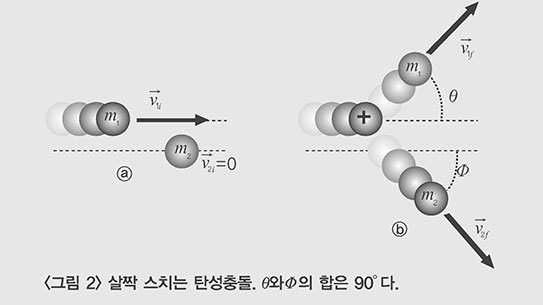
에너지를 얻는 확실한 방법중의 하나는 지구 그 자체로부터 추출해내는 것이다. 지구의 온천은 이러한 자연적인 에너지 공급원이며 따라서 우리가 할일이란 땅에 구멍을 파고 열이 올라와 전기로 변환되도록 하는 것 뿐이다.
샌프란시스코로부터 1백15마일 북쪽에 위치한 한 온천지역은 지난 1960년부터 개발되기 시작했다. 이 지역을 개발하고 있는 사람들에게 이곳은 지구의 내부로부터 값싸고 매연없는 전기를 공급받을 수 있는 조건이 완비된 곳처럼 보였다. 뿐만 아니라 그와같은 전기를 생산할 수 있는 곳은 더욱 많은 것으로 여겨졌다. 1990년도에 이르면 2천 메가와트의 전기가 생산될 것으로 예측됐다.
불행하게도 사실은 그와 달리 나타났다. 총 전기생산량은 2천 메가와트가 아니라 1천5백 메가와트밖에 안됐다. 또한 땅속에 있는 수증기의 압력에 무겁게 눌려있었다. 문제는 지하에 충분한 열기가 있음에도 불구하고 물이 부족했던 것이다.
그래서 너무도 많은 장비들이 동원됐다. 사람들이 해야하는 일이란 증기로 가득한 바위의 틈속으로 수많은 구멍을 파고서 열기와 함께 전기가 올라오길 기다리는 것 뿐이었다. 결국 그런 작업이 진행됐는데 구멍들이 늘어나면서 열과 전기 획득량은 점점 줄어들게 됐다. 1980년대 후반에 이르자 그 온천지역이 과도하게 개발됐음이 분명해졌다.
그러나 그동안도 엔지니어들은 3백만 인구가 쓸 수 있는 3천 메가와트의 에너지를 생산하기에 충분한 양의 증기가 추출될 수 있을 것으로 믿어 의심치 않았다. 이와같은 에너지 공급은 30년간 계속될 것으로 생각했다. 그러나 이것은 틀린 예측이었다.
만약 온천지대가 보다 천천히 개발됐더라면 기대에 어느정도 했을 지도 모른다. 그러나 사실은 그렇지 못했다. 1970년대의 석유파동 당시 휘발유값은 하늘로 치솟았지만 지하에너지를 뽑아낼 수 있다는 것은 기술적으로 너무나 확실했다. 뿐만 아니라 어려운 에너지시대를 맞은 미국 정부는 지하에너지를 개발하는데 경제적 특혜를 부여하고 있었다.
그 결과 온천지대의 개발은 가속화돼 연 70 메가와트에서 1백50메가와트로 생산량이 뛰었다. 따라서 1988년도의 전기생산량은 1981년도에 비해 두배이상 늘어났다.
온천증기의 압력이 기하급수적으로 하락되고 있음이 분명한데도 전기 생산을 위한 기술개발은 계속됐다.
이전에 예측했던 만큼의 에너지를 공급받기에는 암석이나 온천지대의 갈라진 틈바구니에 물이 부족하다는 사실이 누구에게나 명백하게 인식되고 있는데도 개발은 현재 진행중이다. 사실 캘리포니아주 에너지 위원회는 온천지대를 개발하는데 필요한 각종 작업들을 이미 승인한 바 있다.
이제 전문가들은 이 지역을 회복시키는 방법들을 고안하고 있다. 가장 좋다고 생각되는 방법은 압축된 증기가 공기속으로 사라져 버리기 전에 이를 이용해 찬물을 온천지대속으로 주입시키는 것이다.
그러나 그렇게 하더라도 가뭄으로 물이 귀한 까닭에 작업가들은 그 지대의 원기를 회복시키기 위해서는 수도관을 묻어야 될 것으로 보고 있다.
물론 다른 온천지대들이 개발될 수도 있겠으나 이를 위한 기술 개발은 조심스럽게 진행되어야 한다.
미국내 화산지역 지표면에서 발생하는 열에너지는 미국내 전체 석탄보유량 에너지의 10배 가량 될 것으로 여겨진다.
엔지니어들은 건조하고 뜨거운 바위에 구멍을 뚫고 깨부순다. 그리고 물을 흘려넣게 되면 다른 구멍으로 다시 나오게 되는 것이다.
이제 과연 뜨거운 암석이 너무 빨리 식지도 않고 물이 과다하게 새 나가지도 않은채 유지될 수 있는지를 밝히는 일년간의 순환시험을 위한 마지막 준비가 한창이다.
지하에너지는 뜨거운 암석에서만 생기는 것이 아니라 지하 5~7km에 놓인 녹은 바위, 즉 용암으로부터 생긴다. 그토록 깊은 지하밑의 용암에까지 파들어 갈수 있는 튼튼한 장비는 없다. 현재 사람들은 캘리포니이주 요세 미티 국립공원 동부에 위치한 롱밸리에서 작업중이다. 그들의 목표는 6km를 파들어가거나 5백℃ 열지대를 만나든가 그중 하나를 달성하고자 하는 것이다.
지하에너지는 지하에너지 및 화석연료저장고의 혼합 성격을 띤 텍사스와 루이지애나 주에서도 얻어진다. 이 지하저장고는 바닷물이 빠지지 않는 진흙층사이에 놓인 구멍많은 사암(砂岩)상에 지금으로부터 약1천5백만년 부터 1천8백만년 전 사이에 형성됐다. 그후 침전물이 쌓임에 따라 이곳에 압력이 가해졌다. 그리고 유기물질이 부식하면서 메탄가스를 만들어 낸 것이다.
1970년대에는 압력받은 지역에 구멍을 파는 간단한 작업이 지열의 분출물과 메탄가스나 천연가스를 배출할 수 있으리라고 짐작되기도 했다.
그후 수년간의 연구는 이러한 낙관적인 가능성을 줄이는 것이었다. 그러나 미국 에너지부의 레이몬드 포춘씨는 단 한개의 구멍이라도 생각보다는 훨씬 많은 양을 뽑아올릴 수 있으리라는 견해를 고집하고 있다.
어떻든간에 일반적인 지열에너지와 관련된 그동안의 경험은 이 새로운 에너지 공급원에 대한 사람들의 생각을 불확실한 것으로 만들고 말았다.
COOLING DOWN
One sure way of getting energy is extracting it from the Earth itself. The Earth's hot springs provide a natural energy source - and it is only necessary, then, to dig holes in the ground and let the heat come up and be converted to electricity.
One such a region, 115 miles north of San Francisco, began to be exploited in 1960. It seemed to people who were exploiting the field that it was ready to offer cheap smog-free electricity from the Earth's interior. What's more, there seemed to be more and more of such electricity produced. By 1990, it was suggested that 2,000 megawatts of electricity would be produced.
Unfortunately, that's not the way it worked out. The amount of electricity being produced is not 2,000 megawatts but only 1,500. What's more, the steam pressure in the ground is plummeting. The trouble is that although there is plenty of heat in the ground, there is not plenty of water.
What happened was that too many engineering devices were put into use. All one had to do was to drill a bunch of holes down into the steam-filled cracks in the rock and wait for heat and electricity to come out. And it did, too, but as more and more holes were drilled, less and less heat and electricity emerged. By the late 1980s, it was clear that the field was overdeveloped.
Meanwhile, though, the engineers were convinced that enough steam would be developed to produced 3,000 megawatts of energy; enough power for 3 million people. They felt that this could be carried on for 30 years. But they were all wrong.
If the region had been developed slowly, then it may have continued in a reasonable fashion. However, that's not how it worked. Oil prices skyrocketed during the oil embargo of the 1970s and it was clear that geothermal energy could be siphoned off. Then, too, the government, at that time, provided economic incentives to make sure that geothermal energy would be developed.
The result was that development accelerated, jumping from 70 megawatts to 150 megawatts per year. By 1988, generating capacity had more than doubled from the 1981 level.
The new engineering levels kept on going, even though it was clear that steam pressures were dropping at an accelerating level.
By now it is clear to everyone that there isn't enough water in the rocks and crevices below the field to provide the energy once estimated, but development continues. In fact, the California Energy Commission has approved every step that served to continue to develop the field.
Now experts are trying to determine methods for rejuvenating the field. The best chance would seem to be injecting cold water into the field, using steam that is condensed before it vanishes into the atmosphere.
However, even so, water is so scarce on account of the drought that the operators are likely to have to pipe in treated sewage to recharge the field.
Of course, other hot springs regions could be developed but the engineering that must be made use of must be exploited cautiously.
Heat generated near the surface of volcanic areas of the United states is expected to be about 10 times the heat energy of all U.S. coal deposits.
Engineers drill into the dry, hot rock and fracture it. They then send down water, which comes up again through another drill hole.
Now final preparations are being made for a year-long flow test to see whether the system can maintain its heat output without cooling off too fast or leaking excessively.
Geothermal energy arises not from mere hot rock, but from magma-molten rock that lies 5 to 7 kilometers down. No hardware durable enough to work its way through such magma is available. Right now, people are working in Long Valley east of Yosemite National Park in California. The goal is to reach 6 kilometers down, or a temperature of 500°C, whichever comes first.
Geothermal energy is also available in Texas and Louisiana, where there is a gybrid of geothermal energy and fossil fuel reservoirs. The deposits formed between 15 million and 18 million years ago, when seawater was trapped in porous beds of sandstone between impermeable clay layers. As more sediments piled on, the material became pressurized. In addition, methane released by the decay of organic matter formed.
In the 1970s, there was some speculation that a simple drill hole into a geopressured zone would unleash a gusher of geothermal heat plus a quantity of methane, or natural gas.
The years of research has reduced optimism in this respect. But Raymond Fortune of the Department of Energy maintains that a single well can drain a far larger volume that had been expected.
Nevertheless, the experience with ordinary geothermal energy has made people uncertain about new energy sources.
(C)1991, Los Angeles Times Syndicate

















